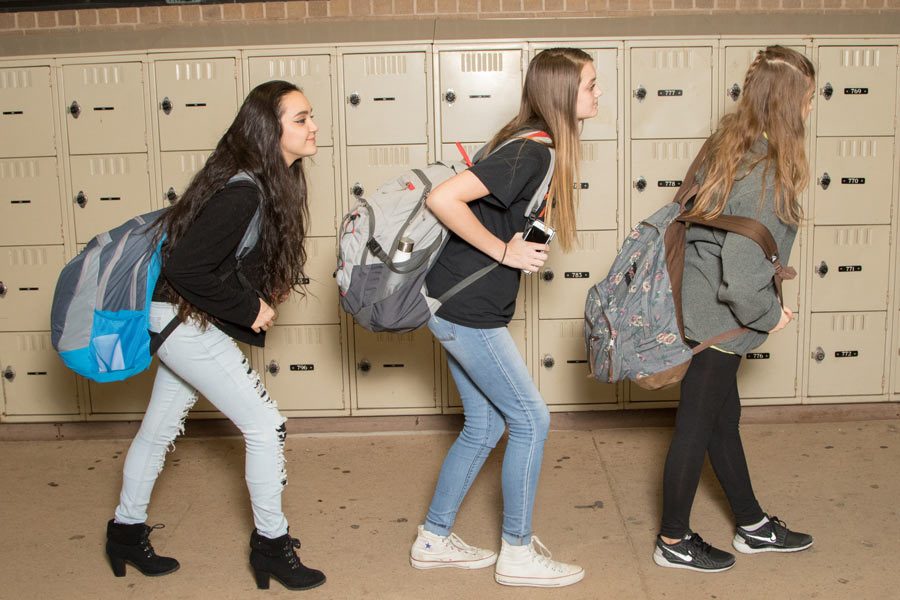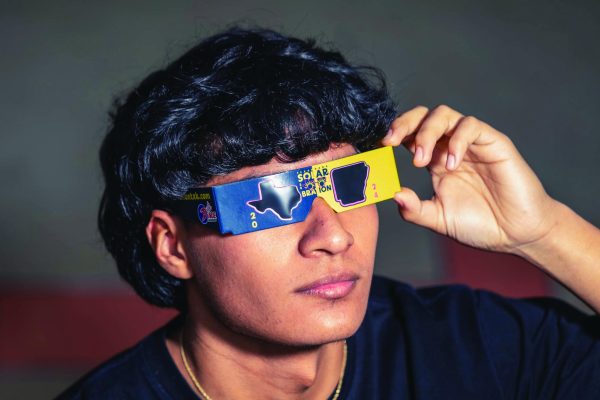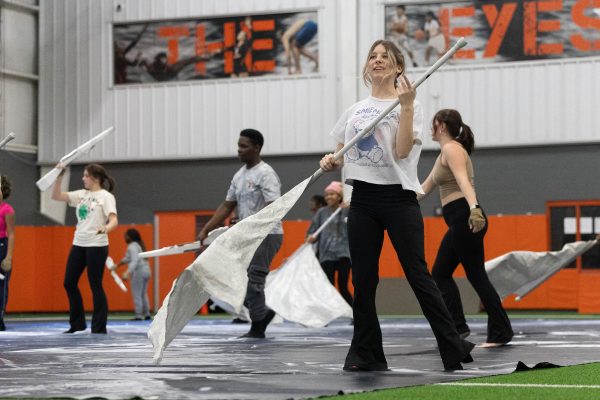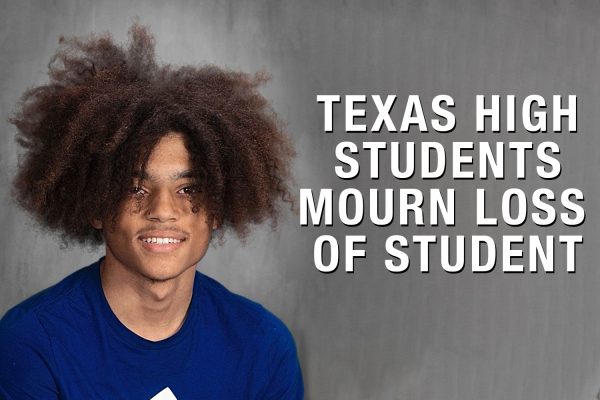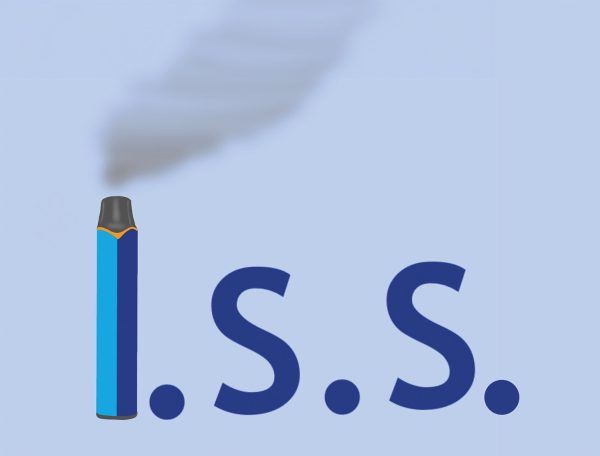Put your back into it
Heavy backpack can result in harmful long-term effects
Photo illustration
January 1, 2017
She trudged through her front door and threw her backpack aside with tears streaming down her face. Her head was pounding, her legs ached and every nerve in her body pulsated with incapacitating throbs. Unable to unveil the source of her recurring pain, she stumbled to her room and collapsed on her bed. Little did she know that the root of her trauma would soon be equated with a biological abnormality: a 30 degree curve in her spine.
About 5 years ago, senior Emily Nixon discovered she suffers from scoliosis, an irregular vertical curvature of the spine.
“I found out [I had scoliosis] at the end of my seventh grade year,” Nixon said. “It really explained a lot of pains I was having in my legs and why I would get really bad headaches and pinched nerves every day. I would come home from swim in tears because it was just so much on my body.”
Because of her scoliosis, Nixon is incapable of carrying heavy objects, which is problematic due to the heavy backpacks high schoolers are required to carry around.
“I can’t lift heavy stuff,” Nixon said. “My backpack is the worst. It puts a lot of pressure on my back. Most of the time if I have an extra book I have to take with me, I will just carry it. I have to be super careful sometimes with what I do.”
Backpacks have been known to be as heavy as 40 percent of a student’s total body weight. Jam-packed with textbooks, notebooks, binders and supplies, walking across campus with a backpack with such substantial weight can be a strenuous task. What most students don’t think about, however, is the physical toll it can take on their bodies, especially if they aren’t carrying their backpacks correctly.
“If you wear your backpack on one shoulder then the muscles on the other side get weak,” said orthotics and prosthetics specialist David LeFors. “The muscles on the side that are holding it are firing eccentrically to keep you balanced, and so you can get functional scoliosis in the muscles. That compressive force as you’re growing hinders the side of the vertebrae that wants to grow, the other side does grow and then you actually can get a bone-structure scoliosis.”
Although experts are still unsure of what exactly causes scoliosis, a lot of times it’s manifestation in teens is directly linked with growth spurts. According to the Center for Academic Research and Training in Anthropogeny (CARTA), adolescent growth spurts for girls reaches it’s end at around 18-19 years of age and can range from 20-22 years of age for boys.
“On each of your vertebrae, you have growth plates on both sides,” LeFors said. “When people have a big growth spurt, that’s usually when scoliosis will show up. Girls in particular usually have a really big growth spurt right when they turn 12 or 13 and that’s why the likelihood of contracting scoliosis is 9 to 1 girls over boys. With the backpacks, there’s a heavy weight on one side of your body so there’s an imbalance there that can create a situation where only one side of your spine grows a certain way.”
Back braces are the only means of counteracting scoliosis; however, they are only effective while an individual is still growing.
“Usually what they’ll do is try to maintain [the scoliosis] with a brace so it doesn’t progress,” LeFors said. “After 20 degrees, your spine becomes exponentially more unstable. There’s a certain point where if the curves in your scoliosis get too large, then it’s more likely to progress and keep getting worse. Scoliosis above 40 to 50 degrees can start interfering with your lung and cardiovascular system.”
As the scoliosis progresses over time, it can often yield lethal results.
“[My scoliosis] is starting to push in on my stomach and affect my organs. It really affects my legs and balance,” Nixon said. “But I recently got that checked out. Hopefully, it won’t affect me too much as I get older.”


